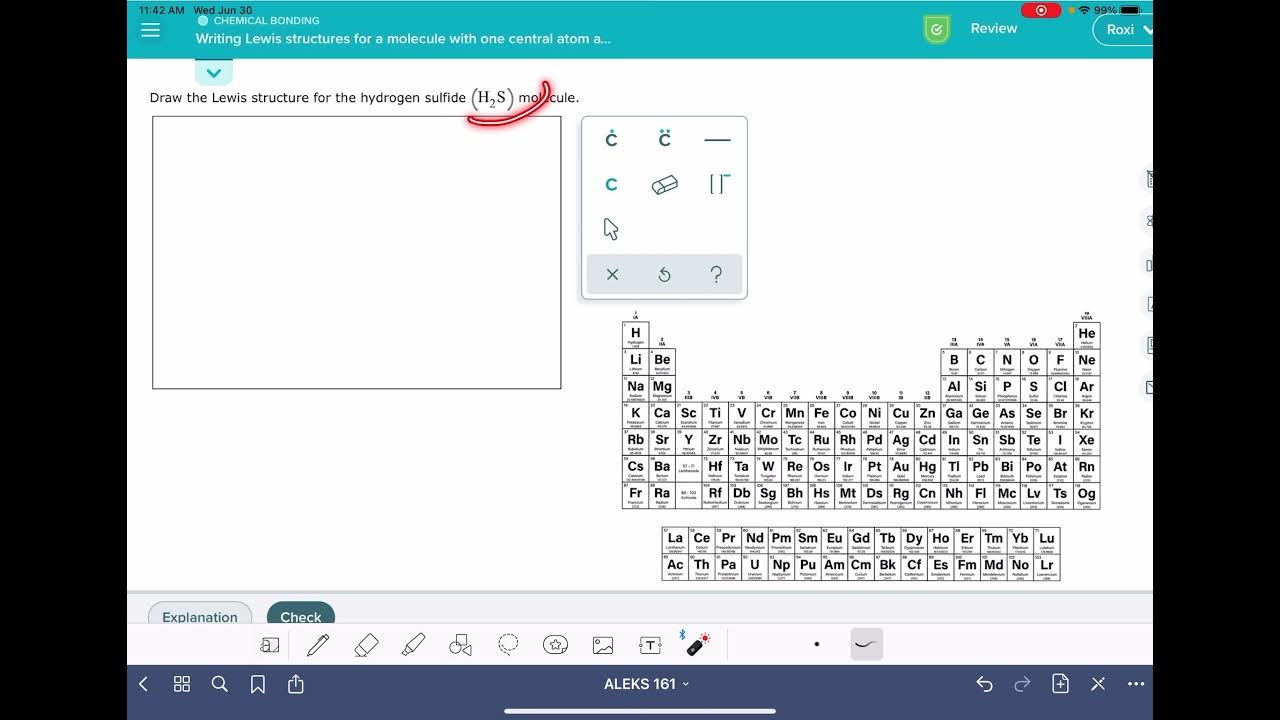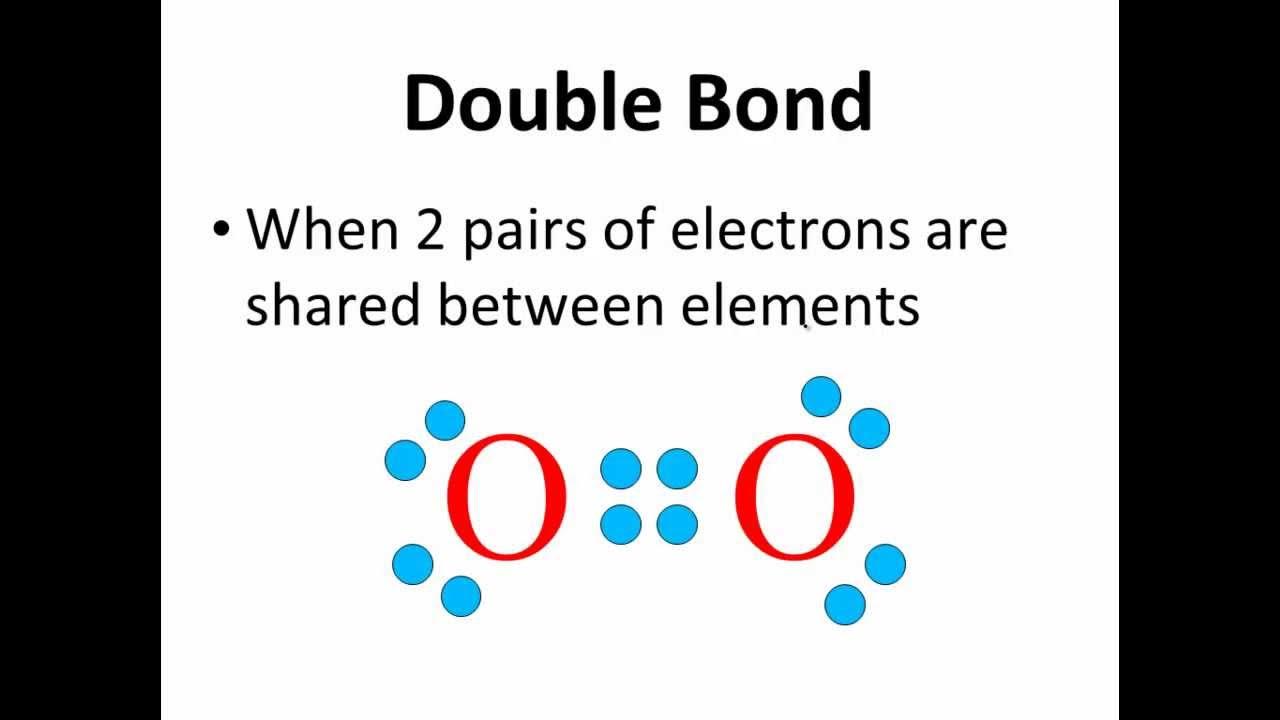Lewis Structures Made Easy: Examples and Tricks for Drawing Lewis Dot Diagrams of Molecules
Summary
TLDRIn 'Lewis Structures Made Easy' by Ketzbook, viewers learn to draw Lewis structures through five steps: counting valence electrons, identifying central atoms, drawing single bonds, distributing remaining electrons as lone pairs, and converting lone pairs into additional bonds to achieve an octet for each atom. The video covers molecules like N2, O2, F2, and CO2, highlighting the pattern where elements' bond numbers plus their valence electrons equal eight. An alternate, faster method for drawing Lewis structures is introduced, applicable when atoms can achieve their desired bond numbers and octets. The video also addresses exceptions like ammonia, phosgene, carbon monoxide, and borane, emphasizing the importance of following the standard method for complex cases. It concludes with a trivia question about toxicity among the compounds discussed.
Takeaways
- 🔬 **Basic Steps for Lewis Structures**: The video reviews five fundamental steps to draw Lewis structures, which are essential for understanding chemical bonding.
- 🔗 **Counting Valence Electrons**: The first step in drawing Lewis structures is to count all the valence electrons available for bonding.
- 🌐 **Identifying Central Atoms**: For diatomic molecules, there is no central atom, but for others, the central atom is typically the one present in the smallest quantity.
- 💬 **Single Bonds First**: Start by drawing single bonds between atoms, which represent the sharing of two electrons.
- 🔶 **Lone Pairs**: Place remaining valence electrons as lone pairs on the atoms, ensuring each atom has a stable electron configuration.
- 🔄 **Adjusting Bonds for Octets**: Convert lone pairs into double or triple bonds to achieve an octet for each atom, except for hydrogen which aims for a duet.
- 🌀 **Patterns in Bonding**: The number of bonds an element forms plus its number of valence electrons typically equals eight, reflecting the octet rule.
- ⚖️ **Alternate Method for Lewis Structures**: An alternative method for drawing Lewis structures involves determining the number of bonds each atom wants and placing the most bond-desirous atom in the center.
- 🚫 **Limitations of Alternate Method**: The alternate method may not always be applicable, especially when atoms cannot achieve a full octet or form an unusual number of bonds.
- 🌟 **Examples and Practice**: The video provides practical examples, such as N2, O2, F2, CO2, and others, to illustrate the process of drawing Lewis structures using both standard and alternate methods.
- ☠️ **Toxic Compound Trivia**: The video concludes with a trivia question about the toxicity of compounds discussed, engaging viewers and encouraging interaction.
Q & A
What are the 5 basic steps for drawing Lewis structures?
-The 5 basic steps for drawing Lewis structures are: 1) Count all the valence electrons. 2) Determine the central atom. 3) Draw single bonds between atoms. 4) Put all remaining valence electrons on atoms as lone pairs. 5) Turn lone pairs into double or triple bonds to give every atom an octet or duet (for hydrogen).
Why is there no central atom in diatomic molecules like N2?
-In diatomic molecules such as N2, there is no central atom because both atoms are identical and there is no clear distinction between a central and peripheral atom.
How many valence electrons are in a molecule of N2?
-A molecule of N2 has 10 valence electrons, calculated by multiplying the number of valence electrons of a single nitrogen atom (5) by the number of nitrogen atoms in the molecule (2).
What is the significance of an octet in Lewis structures?
-An octet refers to having 8 valence electrons, which is the goal for most atoms in a Lewis structure to achieve a stable electron configuration, similar to the noble gases.
How does the number of bonds an element makes relate to its position on the Periodic Table?
-The number of bonds an element tends to make is often related to its position on the Periodic Table. For example, carbon makes 4 bonds, nitrogen makes 3, oxygen makes 2, and fluorine makes 1, which corresponds to their order on the Periodic Table.
What is the alternate method for drawing Lewis structures, and when might it fail?
-The alternate method for drawing Lewis structures involves figuring out how many bonds each atom wants, placing the atom that wants the most bonds in the middle, giving each atom the number of bonds it wants, and adding lone pairs to give every atom an octet. This method might fail when atoms cannot achieve a full octet or when the desired number of bonds cannot be satisfied.
Why does the alternate method for drawing Lewis structures sometimes result in an incorrect structure for molecules like borane?
-The alternate method can result in an incorrect structure for molecules like borane because it does not account for the fact that boron typically forms 3 or 4 bonds instead of 5, even though it has only 3 valence electrons. This can lead to an incorrect placement of lone pairs.
How many valence electrons does carbon dioxide (CO2) have in total?
-Carbon dioxide (CO2) has a total of 16 valence electrons, calculated by adding the valence electrons of carbon (4) to twice the valence electrons of oxygen (6).
What is the role of hydrogen in the Lewis structure of ammonia (NH3)?
-In the Lewis structure of ammonia (NH3), hydrogen plays the role of a peripheral atom, forming single bonds with the central nitrogen atom. Hydrogen atoms only want to achieve a duet with 2 valence electrons, so they do not form lone pairs.
What is the most toxic compound mentioned in the video, and how does its toxicity relate to its Lewis structure?
-The most toxic compound mentioned in the video is phosgene (COCl2). Its toxicity is not directly related to its Lewis structure but to its reactivity and ability to disrupt biological processes. The Lewis structure helps us understand how the atoms are bonded, but the toxicity arises from the molecule's interaction with biological targets.
Outlines

このセクションは有料ユーザー限定です。 アクセスするには、アップグレードをお願いします。
今すぐアップグレードMindmap

このセクションは有料ユーザー限定です。 アクセスするには、アップグレードをお願いします。
今すぐアップグレードKeywords

このセクションは有料ユーザー限定です。 アクセスするには、アップグレードをお願いします。
今すぐアップグレードHighlights

このセクションは有料ユーザー限定です。 アクセスするには、アップグレードをお願いします。
今すぐアップグレードTranscripts

このセクションは有料ユーザー限定です。 アクセスするには、アップグレードをお願いします。
今すぐアップグレード関連動画をさらに表示

ALEKS: Writing Lewis structures for a molecule with one central atom and no octet rule exceptions

Lewis Diagrams Made Easy: How to Draw Lewis Dot Structures

IKATAN KIMIA : IKATAN KOVALEN KOORDINASI | KIMIA SMA KELAS 10

Lewis Dot Structures for Covalent Compounds - Part 1 CLEAR & SIMPLE

Chem Ch 6 Section 6.5: VSEPR Theory (part 1)

Molecular Geometry: Rules, Examples, and Practice
5.0 / 5 (0 votes)
